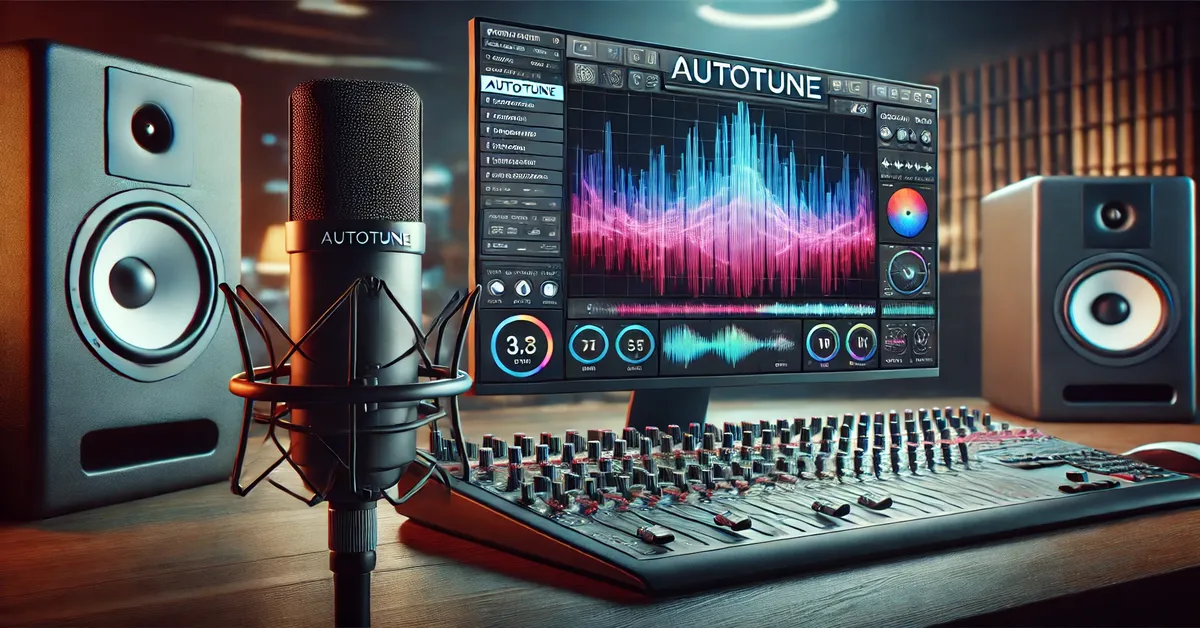Since its debut in 1997 autotune has transformed how vocals and instruments are produced in music. Introduced by Antares Audio Technologies autotune was initially designed to correct off-key pitches in real-time, allowing for perfectly tuned sound. Over the years, it has evolved from a behind-the-scenes tool for subtle pitch correction into a creative effect that defines genres and entire musical movements. For those looking to experiment with autotune without spending a dime, the world of free autotune plugins offers exciting possibilities.
Whether you’re an aspiring artist, a producer, or just curious about the technology, this article dives deep into the history of autotune, its impact on music, and the best free autotune tools available today.
The Origin of Autotune
How Autotune Began
Autotune started as a solution for pitch correction. It allowed musicians and producers to tweak vocal or instrumental recordings, aligning them to the correct pitch without requiring a re-recording session. This innovation quickly caught the attention of music professionals due to its ability to save time and improve the quality of recordings.
Cher’s Role in Popularizing Autotune
The watershed moment for autotune came in 1998 when Cher’s hit single “Believe” showcased the now-iconic robotic effect. By setting the autotune’s retune speed to zero, Cher’s vocals gained a futuristic, almost otherworldly sound. This effect was initially met with mixed reactions but eventually became a staple in pop and electronic music production.
How Autotune Revolutionized Music
From Pitch Correction to Creativity
Autotune became more than just a tool for pitch correction. It became a creative weapon that producers wielded to craft unique vocal styles. T-Pain’s distinctive use of autotune in the mid-2000s propelled the effect into the mainstream. Soon, artists like Lil Wayne, Kanye West, Travis Scott, and Playboi Carti incorporated autotune to shape their signature sounds.
Autotune in Modern Genres
In modern rap, pop, and trap music, autotune is not just about fixing errors—it’s about creating art. Artists use it to add emotional depth, futuristic vibes, or even surreal elements to their vocals. This shift in perception—from a corrective tool to a creative effect—has cemented autotune as a central element in contemporary music production.
Why Free Autotune Tools Are Popular
Accessibility for Beginners
For beginners or those on a budget, investing in professional autotune software can be expensive. Free autotune plugins provide a fantastic entry point for experimenting with vocal effects and pitch correction. These tools allow users to explore autotune’s capabilities without making a financial commitment.
Lightweight and User-Friendly Options
Free plugins are often lightweight, user-friendly, and packed with essential features. They’re perfect for home studios, indie producers, or anyone curious about how autotune works without needing advanced tools.
Best Free Autotune Plugins You Should Try
Graillon 2
Graillon 2 by Auburn Sounds is a powerful free autotune plugin known for its versatility. It offers both pitch correction and creative vocal effects, making it a favorite among beginners and experienced producers. With features like formant shifting and pitch modulation, Graillon 2 allows for both subtle tuning and dramatic transformations.
GSnap
GSnap is one of the most popular free autotune plugins, offering basic pitch correction and creative vocal manipulation. It includes a MIDI input feature, allowing users to tune vocals to specific notes. GSnap’s simplicity and effectiveness make it a go-to option for those just starting out.
Voloco
Voloco is a real-time voice processing plugin that combines pitch correction and vocal effects. Its straightforward interface and presets make it ideal for creating modern autotune effects commonly found in trap and hip-hop.
MAutoPitch
MAutoPitch by MeldaProduction is a free plugin that provides pitch correction and vocal effects with an intuitive interface. It’s known for its easy-to-use controls and high-quality output, making it a great choice for producers on a budget.
Autotune Evo
Autotune Evo, a free legacy version from Antares, offers basic pitch correction features. While it lacks the advanced capabilities of modern autotune tools, it’s still a reliable choice for achieving a polished vocal sound.
How to Use Free Autotune Plugins Effectively
Choosing the Right Plugin
Select a plugin that aligns with your goals. For subtle pitch correction, go for tools like MAutoPitch or GSnap. If you’re after creative effects, Voloco or Graillon 2 are excellent options.
Setting Key and Scale
To make autotune sound natural, set the plugin to the correct key and scale of your track. This ensures that pitch adjustments align harmoniously with the music.
Adjusting Retune Speed
Retune speed controls how quickly the autotune adjusts pitch. A fast retune speed creates robotic, synthetic effects, while slower speeds yield smoother and more natural-sounding results.
Adding Layered Effects
Combine autotune with other effects like reverb, delay, or distortion to add depth and texture to your vocals. This approach allows you to craft unique and compelling soundscapes.
Genres Where Autotune Shines
Pop Music
Pop artists often use autotune for subtle pitch correction and to enhance the polish of their recordings. However, it’s also used creatively to add futuristic or dreamy elements to their tracks.
Trap and Hip-Hop
In trap and hip-hop, autotune is a defining characteristic. Artists like Future, Travis Scott, and Lil Uzi Vert use it not just for tuning but to convey emotion and add personality to their vocals.
Electronic and Dance Music
In electronic genres, autotune is used to create robotic, surreal vocal effects that blend seamlessly with synthesized beats and melodies.
The Future of Autotune
AI-Driven Autotune Tools
As music production technology evolves, autotune continues to innovate. AI-driven autotune tools are emerging, offering smarter pitch correction and personalized vocal effects. These advancements are making autotune more accessible and powerful, ensuring its relevance in the ever-changing music industry.
Expanding Creative Possibilities
The boundaries between autotune as a correction tool and a creative effect are becoming increasingly blurred. With new generations of artists and producers experimenting with the technology, the future of autotune is as dynamic as the music it shapes.
Pros and Cons of Free Autotune Plugins
Pros
- Cost-effective entry point for beginners and hobbyists.
- Access to essential pitch correction and vocal effect features.
- Lightweight and easy to use, even for those with limited production experience.
Cons
- Limited advanced features compared to premium autotune software.
- May lack customer support or regular updates.
- Performance can vary depending on the quality of the plugin.
How to Download and Install Free Autotune Plugins
Finding Reliable Sources
Research reputable sources to avoid malware or low-quality downloads. Trusted platforms ensure the safety of your system.
Installing Plugins in Your DAW
Download the plugin in a format compatible with your digital audio workstation (DAW). Follow the developer’s installation instructions, then restart your DAW to access the plugin.
FAQs
What is autotune used for?
Autotune is used for pitch correction and creating unique vocal effects in music production.
Are free autotune plugins as good as paid ones?
Free plugins are great for basic needs, but paid versions often include advanced features and better sound quality.
Can autotune make anyone sound good?
Autotune improves pitch but cannot replace natural vocal ability or performance skills.
Which is the best free autotune plugin for beginners?
GSnap and MAutoPitch are excellent choices for beginners due to their simplicity and effectiveness.
Is autotune only for vocals?
While primarily used for vocals, autotune can also be applied to instruments for creative effects.
Do I need a specific DAW to use free autotune plugins?
Most free autotune plugins are compatible with popular DAWs like FL Studio, Ableton Live, and Logic Pro. Check the plugin’s compatibility before downloading.







